Experienced international shot and coach John Dudley reveals the three most common questions he’s asked – and the answers
It is the perfect time for you to set yourself up for a fresh start to an incredible season. I believe fresh starts happen best when you have a clear mind and have wiped away any unanswered questions that you may have. For this article I plan to answer the top three most commonly asked questions I get from archers. These are important and timeless topics, and no matter how many times I answer them they continue to be asked again and again. There is no doubt these are great questions and ones that I think will help you once you have an answer that you can understand and move forward from. So here they are; your top three.
Your release
One of the most common and continual archery problems is target panic, and archers anticipating the release of the arrow. I don’t think that will come as a surprise to anyone. The majority of archers learn to overcome this and shoot a surprise shot with a “back tension” release of some kind. Most commonly, that will be from one of two styles of release aid. First, there is the hinge release. These fire from the movement of rotation. Then there are the tension-activated releases like the Carter Evolution. These are truly tension-activated releases and release the shot only when they are actively pulled hard against the back wall of the cam. The tension activated is by far my preference as a coach. However, regardless of the type of release you choose, both of these styles promote going through a motion that forces the archer to hold the pin in the scoring ring until they execute. Ideally, you are forced to shoot an unanticipated execution and in my personal opinion, the secret to mastering archery. The surprise shot is the Holy Grail, the master key to unlocking greatness in archery. Shooting a release where you punch the trigger or anticipate the release firing will only take you further away from that greatness.
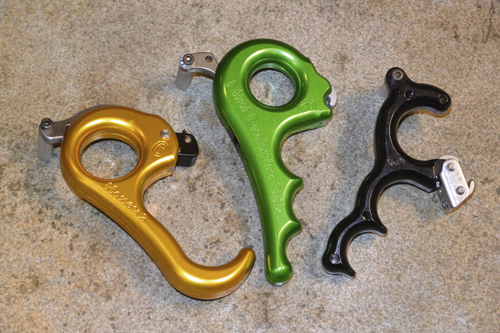
Knowing how to shoot a back tension release is half way to mastering it – the next step is trusting it in tournaments
That said, it is the surprise releases that help get you there and countless numbers of archers use them in practice. Notice how I said ‘in practice’, which bring me to one of your top questions. The question is “I shoot a back tension or hinge release for practice but don’t trust it in a tournament, so what should I shoot during the tournaments?” My answer is simple – shoot what gives you a surprise shot! If you know deep down you can’t shoot a trigger release because you are liable to punch the trigger or develop target panic, then why would you want to trust that release in a tournament? If you know how to shoot an unanticipated shot with a back tension release in practice, then you are halfway to mastering it. The next step is to overcome the fear of not having total control in a tournament. Learn to trust it! The bottom line is if you train with a back tension release but want to step backwards into using a trigger release for a tournament then you will probably never change anything about your scores. Simply put, you can’t change without change.
Look at how many of the top shooters in the world have learned to trust themselves with a back tension release in World competitions. They made a commitment, learned to trust it and now have the results. What release should you shoot in a competition? The only one that forces you to shoot surprise shots!
Your arrow spine
The next question is “what spine arrow should I shoot?” I can honestly tell you that there is not a single archery guru in the world that can answer this question without first looking on an arrow chart. To properly answer this question, there are two things you must do. First, look at an arrow chart from the manufacturer or from one of the top arrow software companies. These charts are essential to getting you in the ballpark of having the correct spine. The second step and, in my opinion the most important, is to put some time into trial and error to fine tuning that arrow. I believe that most people want to just cut an arrow, glue a point in it and expect it to shoot at its absolute best. I can promise you that will only happen if you are incredibly lucky. Most likely though, it will not, and you must understand that you will need to put in the time to make that arrow go from a good performance to a great performance! Years ago I started teaching that you don’t ‘tune a bow’. My belief is that you set up your bow, and then use it to tune your arrows. I know for a fact that a perfect archer with a perfect bow can’t overcome imperfect arrow selection. World-class scores are only shot with a perfectly tuned arrow.
Arrow spine is a sensitive thing and that is the reason there are so many choices. My quickest method of getting my bow set up perfectly to match my arrow spine is the HIL method I teach. The HIL is the Horizontal Impact Line, which is the left to right margin of error in your groups. An arrow that is matched perfectly with a bow will have the lowest possible HIL value. An arrow that has a spine that is too stiff or too weak will not give optimum groups. They may be good, but not great. By adjusting your pulling weight on your bow, either up or down, and then plotting your groups and measuring your HIL, you will quickly see if the arrow you have is slightly stiff, weak, or perfectly matched for your setup. Once you know that, you can make a choice of what to do to gain the best groups. For example, you may do this test and find out your arrow performs better with less draw weight, which means that the arrow you have is slightly weak. Then you have the option to reduce point or draw weight, or simply buy a stiffer shaft so you can shoot the heavier weight. The bottom line is that if you are questioning what arrow should you shoot, then you will need to actually do the work to answer it for yourself. I can promise you that asking someone else this can only get you close, but to find perfection you must be the one to do the work to answer this for yourself.
Your stabilser
It seems like the one part of archery that has the limitless options and configuration choices is stabilisers. That is why this topic is always in question. There are short rods, long rods, stiff rods, side rods, v bars, drop bars, heavy weights, light weights, dampening rods and solid rods. With that said, I totally understand why you need to know “What stabiliser set up should I shoot?” In all fairness, this is one of the most difficult questions to answer because there isn’t any hardcore proof or data that supports a clear-cut winner. I believe stabilisation is a matter of personal preference, and something that can change from bow to bow and person to person.
I believe stabilisation is a matter of personal preference, and something that can change from bow to bow and person to person.
I think it’s important you realise that a stabiliser was designed for two purposes. The first is to balance, and the other is to disperse vibration. Before I talk about balance I want to give my opinion on vibration. After years of shooting everything on the market I have determined I like a stabiliser that eliminates vibrations quickly, and through the end of the rod. Stabilisers that use rubber ‘doinkers’ allow the residual vibration to exit the rods through the end of the rod before coming back through the bow and the body. I believe this is critical to preventing injury and sore joints. A proven system for eliminating vibrations is a rod, rubber and then a weight.
Now that I have talked about vibration, I want to mention balancing. First, I like to use a length rod that I can manage and that I can set on the ground after each shot so I can rest my front arm and reload. Also, keep in mind that the longer the rod, the more it will be affected by wind. I prefer a length long enough to rest my arm but not too long to be hard to manage in the wind. Second is the side rods, and I prefer to keep these simple. I have found that less side rods, V-bars and side weights give me the best repeatable arrow flight. I have proven this simply by shooting arrows through paper with different side rod configurations. Side rods affect the way the bow reacts and turns as it leaves your hand. I know lots of archers who have paper tuning issues that I fixed just by simplifying their side rods. I choose a side rod that is adjusted to an angle and only heavy enough to compensate for my sight weight on the opposite side of the bow. I want to allow my bow to level itself when I am letting it hang by the top cam. I believe this lets the archer hold their bow with minimal front hand tension, and results in less hand torque.
The next thing to consider is overall weight. I believe the heavier you stack the weight, the more you will have to mis-align your body posture to compensate. The human body is not strong enough or unbalanced enough to stay standing straight while holding several pounds extended several feet out past our central point of gravity. I believe proper posture is more important than perfect steadiness, so I choose a manageable weight that allows me to stand tall a with perfect posture. Although increasing mass can help slow down sight movement, it also quickly promotes the front shoulder to become compressed and the body to lean back at the hips.
One thing I have learned is that shooting the same thing as everyone else has rarely worked perfectly for me. This is especially true for stabilisers. I normally start from scratch with each new bow, since each one will have different dynamics. I keep a few basic things in mind: first, keep as much added mass as possible close to the bow. For example, if I feel like I need to add some overall weight I stack it on the riser, not on the ends of my rods. This prevents ‘bounce’, which is common if your stabiliser has a lot of end weight and is not super-stiff. Personally, I don’t prefer the really stiff rods simply because the vibrations carry more impact into my shoulder and elbow. Lastly, I prefer a manageable length side rod that properly compensates for the sight and natural top weight of the bow. Again, hanging the cam on something and making adjustments in the side stabiliser so that the bow is naturally level will make it easy to manage. I commonly see archers shooting very complex stabiliser setups, but they are costing themselves points by over-complicating things. Try it simple and see what happens.
Well there you have it, the top three most commonly asked questions. There is no doubt that these are critical topics and ones that will have a huge impact on your scores. By giving you the answers I hope to clear your mind and let you build trust in understanding them. I believe that in any sport an athlete can greatly improve simply by having trust in themselves and their systems. I also believe that trust comes through education, and the understanding of why they need to do things a certain way. What I have shared with you today are things that I have seen work for all levels of archers, time after time. Read it, let it sink in and then apply it with certainty. I promise you they will work! Shoot straight my friends.


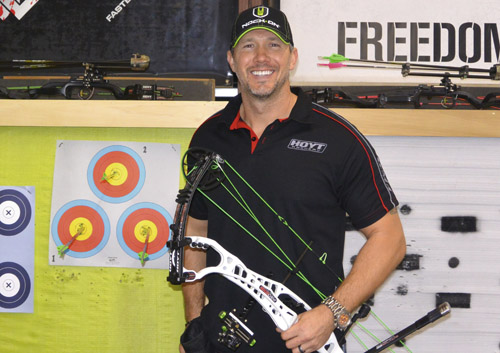
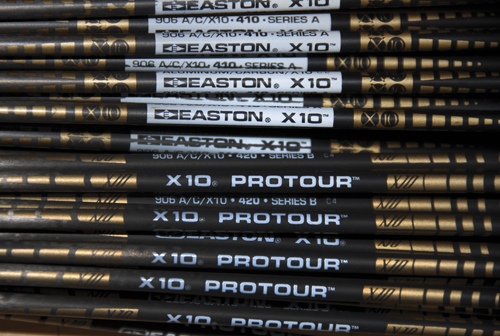
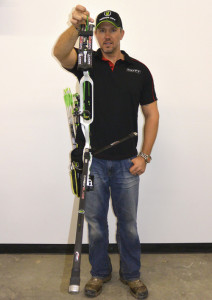
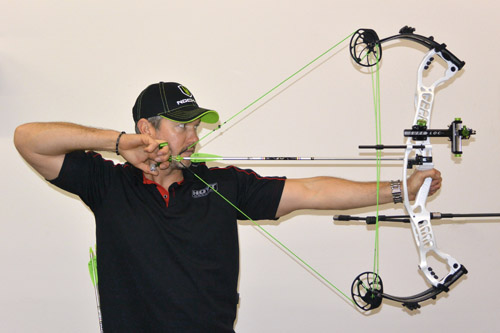
I don’t want to be the guy I hate… But stabilizer is spelled wrong.
I am in archery and I love it.